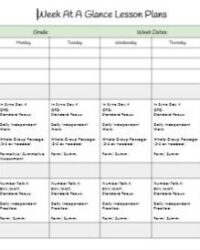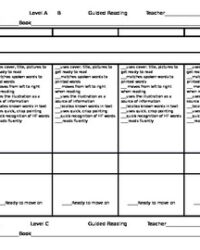Diving deep into a text is an art, and for educators, teaching students how to uncover layers of meaning is a fundamental skill. It’s not just about comprehension; it’s about critical thinking, analysis, and truly engaging with the author’s craft. That’s where a well-structured approach comes in handy, ensuring every student has the tools to become a masterful text detective. If you’re looking to streamline your lesson planning and make the process more effective, having a robust close reading lesson plan template can be an absolute game-changer.
Imagine having a blueprint that guides both you and your students through the intricate dance of annotation, questioning, and discussion, leading to profound insights. For busy teachers, this isn’t just a luxury; it’s a necessity that saves time, ensures consistency, and elevates the learning experience. Let’s explore what makes such a template invaluable and how you can craft one that truly resonates with your classroom’s needs.
Unpacking the Essentials of a Powerful Close Reading Lesson
Close reading goes beyond merely understanding what a text says; it delves into how it says it, why it says it, and what implications those choices hold. It’s about meticulously examining specific words, phrases, sentences, and structural elements to unlock deeper meaning, authorial intent, and the text’s overall impact. A strong close reading lesson encourages students to re-read, annotate, ask probing questions, and engage in thoughtful discussions that push their understanding beyond the superficial.
Before students even begin their first read, a good close reading lesson sets the stage. This might involve briefly introducing the text’s context, author, or any relevant background information without giving away too much. The goal isn’t to pre-teach all answers but to activate prior knowledge and build a basic framework for comprehension. This initial preparation helps students orient themselves and prepares them for the detailed analysis to come.
The core of the lesson revolves around multiple reads with distinct purposes. The first read is often for general comprehension, getting the gist. Subsequent reads become more focused, perhaps looking for patterns, specific literary devices, or challenging vocabulary. Students should be encouraged to annotate aggressively – highlighting, circling, writing questions, making connections, and noting anything that sparks curiosity or confusion. These annotations become the raw material for later discussions and deeper analysis.
Finally, the lesson culminates in activities that allow students to synthesize their findings and articulate their insights. This could involve small group discussions, whole-class debates, Socratic seminars, or even written responses. The focus here is on evidence-based arguments, encouraging students to support their interpretations with specific textual details discovered during their close reading. It’s in this phase that the individual efforts coalesce into a richer collective understanding.
Key Components to Consider
- Text Selection: Choose a short, complex passage that warrants deep analysis.
- Learning Objectives: Clearly define what students should be able to do or understand by the end of the lesson.
- Vocabulary Pre-teaching (Strategic): Identify a few critical words that could impede comprehension and address them beforehand.
- Guiding Questions: Develop open-ended questions that prompt critical thinking, moving from literal to inferential to analytical.
- Annotation Prompts: Provide specific instructions or symbols for students to use while annotating.
- Discussion Strategies: Plan for structured group work or whole-class discussions to facilitate sharing of insights.
- Assessment: Determine how students will demonstrate their understanding (e.g., written response, presentation, participation).
Guiding Questions for Deeper Understanding
- What specific words or phrases stand out to you, and why?
- How does the author use figurative language (metaphor, simile, personification) to convey meaning?
- What is the author’s tone, and how do you know?
- What connections can you make between this text and other texts, real-world events, or your own experiences?
- How does the structure of this passage contribute to its overall message or impact?
Tailoring Your Close Reading Approach for Different Texts and Learners
While a close reading lesson plan template provides a solid foundation, remember that it’s a flexible tool, not a rigid script. The beauty of a well-designed template lies in its adaptability. Not all texts demand the same level or type of scrutiny, nor do all students approach learning in the same way. A complex poem might require more focus on imagery and sound devices, while a dense historical document might necessitate a closer look at bias, context, and rhetorical strategies.
Consider the grade level and developmental stage of your students. For younger learners, a close reading might involve simpler texts and more direct, guided questions, perhaps focusing on identifying main ideas and supporting details. For older students, you can introduce more sophisticated concepts like irony, symbolism, or nuanced character development. Differentiation is key: some students might benefit from pre-highlighted sections, while others thrive with open-ended exploration. Providing choice in how students annotate or respond can also increase engagement and cater to diverse learning styles.
Ultimately, developing a powerful close reading lesson plan template is an iterative process. You’ll refine it over time based on student feedback, lesson outcomes, and your own evolving understanding of effective teaching practices. Each lesson provides an opportunity to reflect on what worked well and what could be adjusted for next time, ensuring that your template continues to evolve into an even more effective tool for fostering deep literacy skills in your students.
- **Vary Text Types:** Apply your template to fiction, non-fiction, poetry, drama, or even visual texts to build diverse analytical skills.
- **Differentiate Annotation Strategies:** Offer options like color-coding, symbol-based annotation, or digital annotation tools to suit different student preferences.
- **Adjust Scaffolding:** For struggling readers, provide more pre-reading support or model annotation explicitly. For advanced readers, pose more challenging interpretive questions.
- **Integrate Technology:** Utilize online tools for collaborative annotation, digital whiteboards for shared insights, or multimedia resources to enhance context.
- **Focus on Specific Skills:** Sometimes, a close reading lesson might zero in on one particular skill, like identifying theme, analyzing author’s craft, or evaluating evidence.
Embracing a structured approach to analyzing texts empowers students to move beyond surface-level comprehension. It cultivates critical thinking, encourages evidence-based reasoning, and transforms them into active, engaged readers who can decipher complex ideas across various disciplines. By providing a clear pathway for this essential skill, educators can consistently foster a classroom environment where intellectual curiosity and deep textual engagement flourish.
As students become more proficient in dissecting texts with precision and insight, they not only improve their reading comprehension but also sharpen their analytical and communication abilities, preparing them for academic success and thoughtful participation in a world filled with information. This foundational skill will serve them well, long after they leave the classroom, as they navigate and interpret the myriad of messages they encounter daily.


